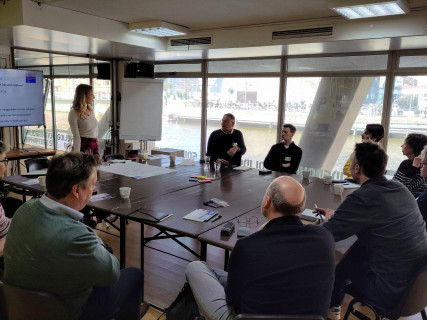The underground is filled with infrastructure and other assets, including electricity cables, fibre optic cables, gas pipelines, heat networks, sewers, and more. Additionally, underground spaces host natural elements crucial for maintaining a healthy urban environment, such as soil essential for urban trees. Consequently, various stakeholders regularly need access to the underground, each with their own interests, creating significant pressure on the underground. Frequent excavation leads to disruptions, extensive damage, and trees that don’t age past 60 (which is very young for trees).
Improvements can be made by enhancing collaboration among stakeholders, sharing more data, and collectively planning underground activities. Understanding the interests of all involved parties is crucial to developing an action plan aimed at enhancing the quality and management of the underground.
Project phase
What is the goal of the project?
We aim for a greener city with increased biodiversity and trees living longer than 60 years. Additionally, we face significant challenges with the energy transition, requiring thicker cables to accommodate growing energy demands and the removal of gas pipelines. According to network operator Alliander, one in four streets will need to be dug up in the coming years to complete this enormous workload. Moreover, the digital transition is gaining momentum, necessitating additional fibre optic infrastructure. Since fibre optic cables are typically near the surface, they are often damaged when other parties excavate.
This challenge addresses various stakeholders with different interests and issues related to the underground. Data regarding the underground infrastructure is often inaccurate, incomplete, or outdated. Coordinated collaboration, data sharing, and joint planning can result in:
• A healthier underground with increased biodiversity.
• Less frequent excavation, reducing disturbances.
• Accelerated transitions.
What is the result of the project?
A healthier soil contributes to more greenery in urban areas, benefiting residents. Accelerating the energy and digital transitions also positively impacts residents.
Who initiated the project and which organizations are involved?
The Municipality of Amsterdam, Alliander, Eurofiber, SPIE, Arcadis, AMS Institute, and the HvA have expressed interest in participating.
What is the next step?





